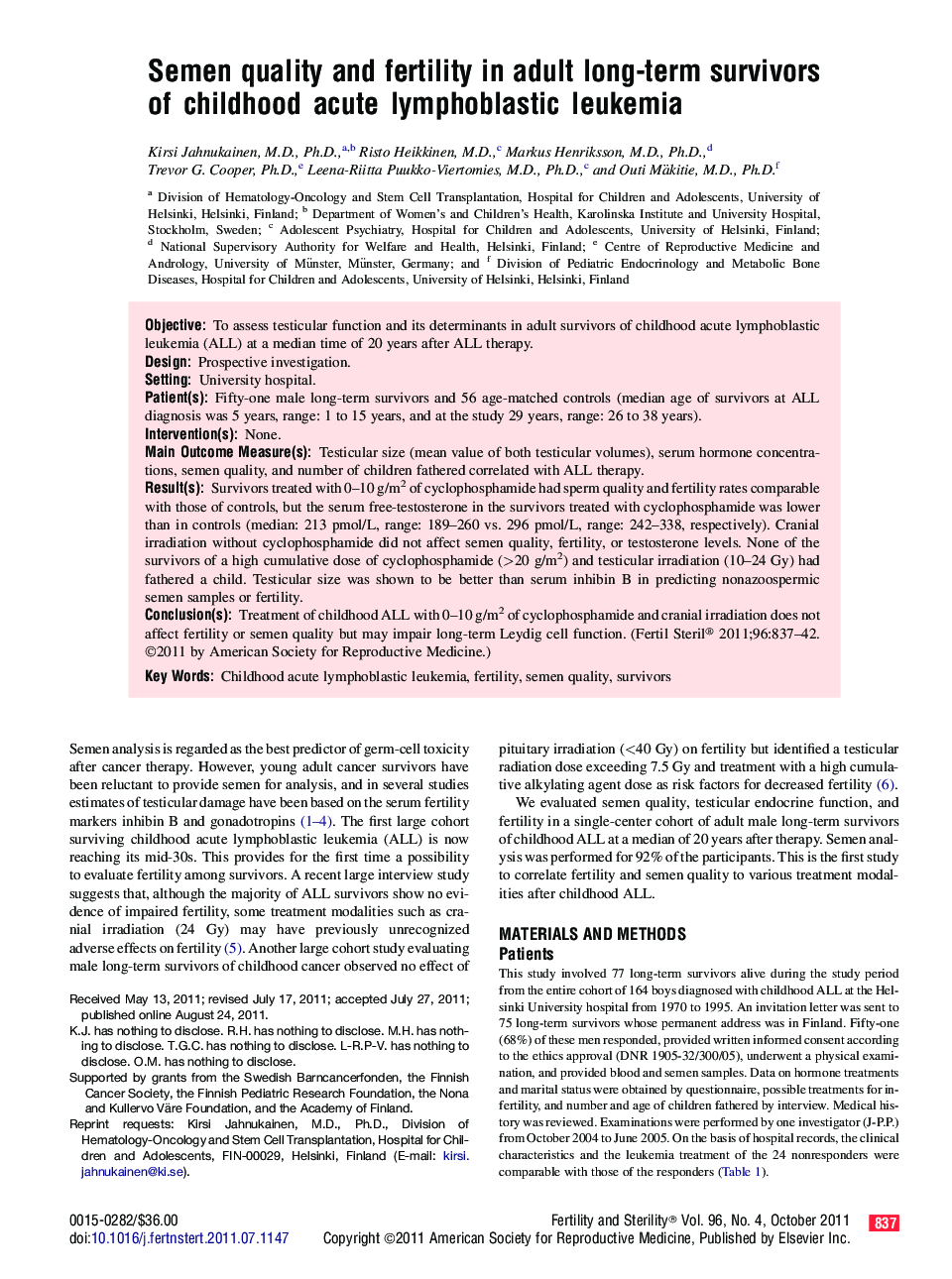| Article ID | Journal | Published Year | Pages | File Type |
|---|---|---|---|---|
| 3932014 | Fertility and Sterility | 2011 | 6 Pages |
ObjectiveTo assess testicular function and its determinants in adult survivors of childhood acute lymphoblastic leukemia (ALL) at a median time of 20 years after ALL therapy.DesignProspective investigation.SettingUniversity hospital.Patient(s)Fifty-one male long-term survivors and 56 age-matched controls (median age of survivors at ALL diagnosis was 5 years, range: 1 to 15 years, and at the study 29 years, range: 26 to 38 years).Intervention(s)None.Main Outcome Measure(s)Testicular size (mean value of both testicular volumes), serum hormone concentrations, semen quality, and number of children fathered correlated with ALL therapy.Result(s)Survivors treated with 0–10 g/m2 of cyclophosphamide had sperm quality and fertility rates comparable with those of controls, but the serum free-testosterone in the survivors treated with cyclophosphamide was lower than in controls (median: 213 pmol/L, range: 189–260 vs. 296 pmol/L, range: 242–338, respectively). Cranial irradiation without cyclophosphamide did not affect semen quality, fertility, or testosterone levels. None of the survivors of a high cumulative dose of cyclophosphamide (>20 g/m2) and testicular irradiation (10–24 Gy) had fathered a child. Testicular size was shown to be better than serum inhibin B in predicting nonazoospermic semen samples or fertility.Conclusion(s)Treatment of childhood ALL with 0–10 g/m2 of cyclophosphamide and cranial irradiation does not affect fertility or semen quality but may impair long-term Leydig cell function.
